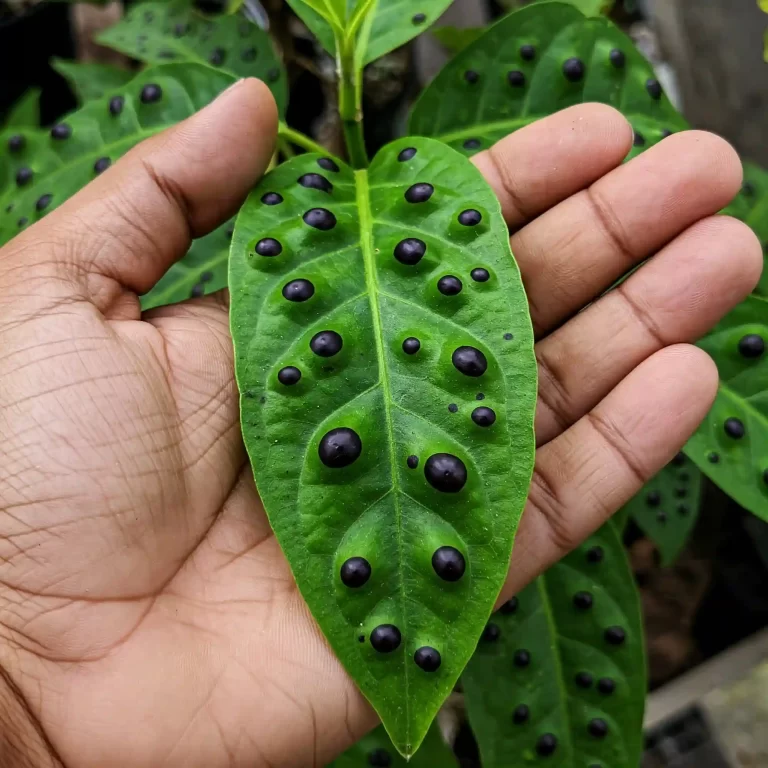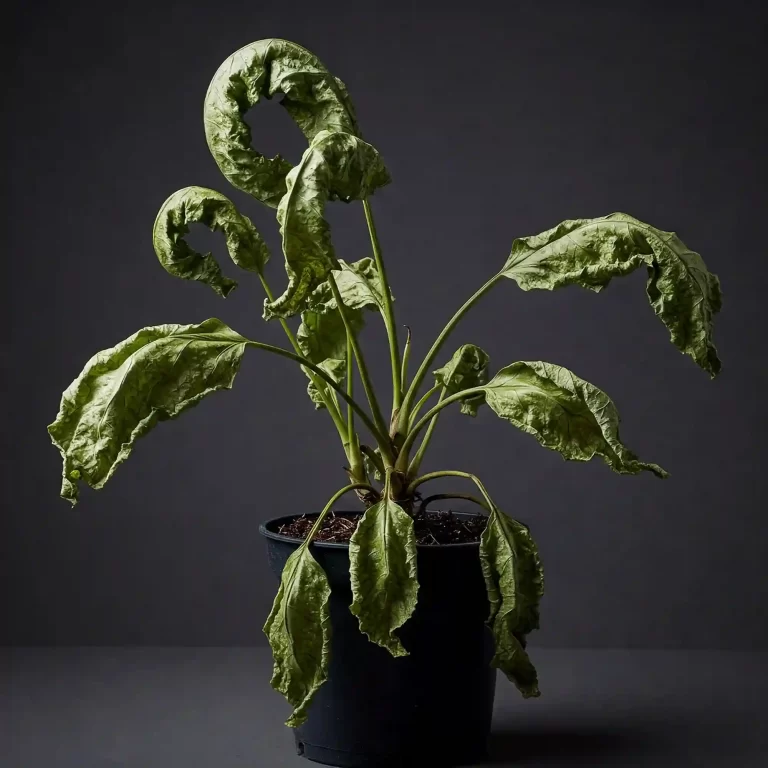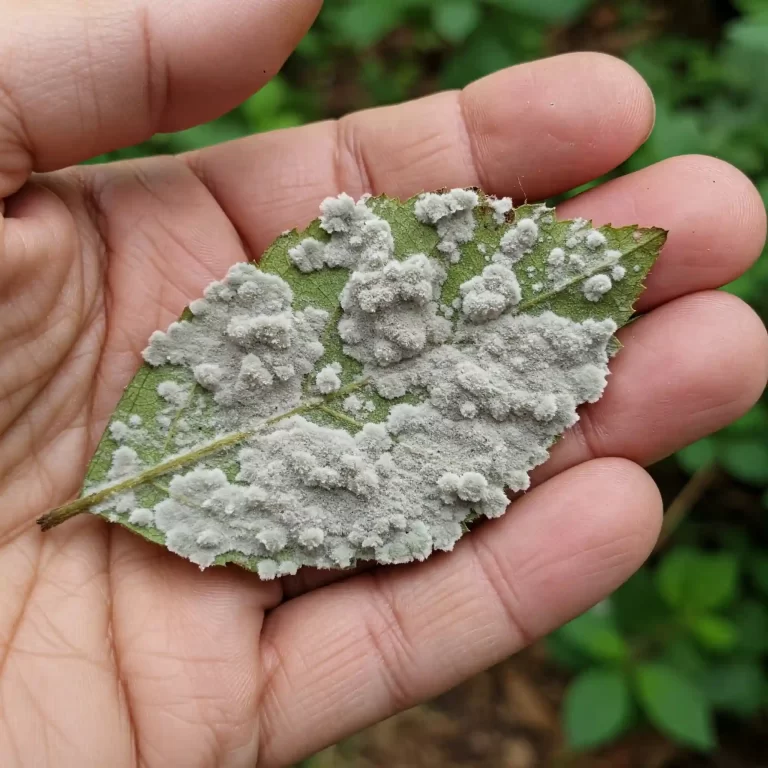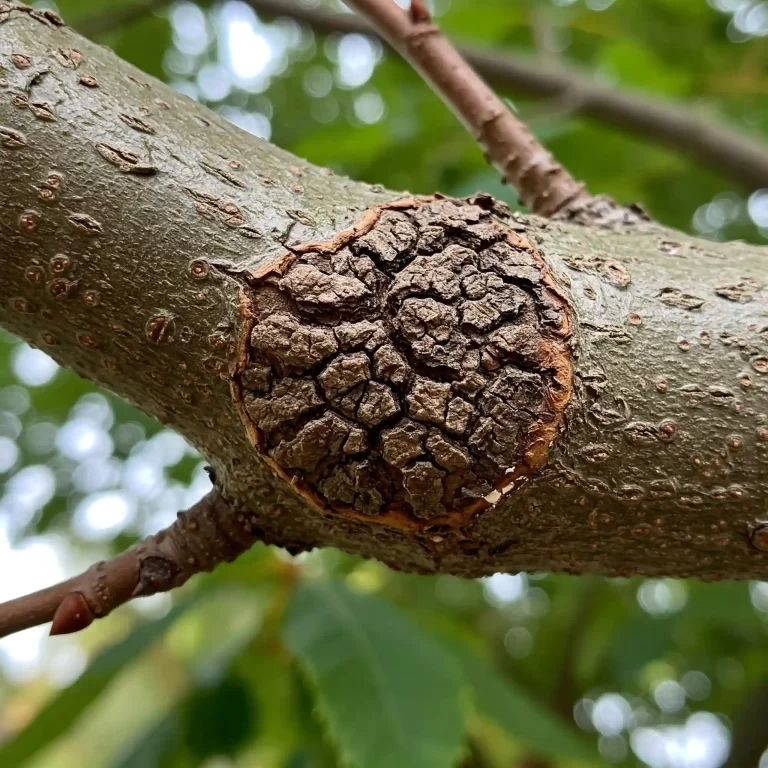| Key Takeaways |
|---|
| – Emerald gem plant, also known as homalomena, is a tropical plant with thick, green spade-shaped leaves that can adapt to different light and humidity conditions. |
| – Emerald gem plant prefers bright, indirect light, but can tolerate lower light as well. Avoid direct sunlight, as it can scorch the leaves. |
| – Emerald gem plant does not like to be overwatered or underwatered. Water the plant thoroughly and let the top 50% of the soil dry out before watering again. Use room temperature water and reduce watering in cooler temperatures. |
| – Emerald gem plant likes warm temperatures between 65-85 °F. It is sensitive to cold and should be kept away from drafts and windows. If you keep the plant outside during summer, bring it inside before the temperature drops below 65 °F. |
| – Emerald gem plant enjoys high humidity, but can adapt to normal indoor humidity as well. You can mist the plant or use a humidifier to increase the moisture in the air. Wipe the leaves with a cloth to remove dust and keep them shiny. |
| – Emerald gem plant does not need much fertilizer, but you can feed it once a month during spring and summer with a diluted general houseplant fertilizer. Do not fertilize in winter or fall. |
| – Emerald gem plant does not require much pruning, but you can pinch back any leggy or tall stems to maintain its shape. You can also remove any old or yellowing leaves with clean, sharp shears. |
| – Emerald gem plant can be propagated by stem cuttings or division. Take a stem cutting with at least two leaves and place it in water or moist soil. Keep it in a warm and bright spot until roots develop. You can also divide the plant by separating the rhizomes and repotting them in fresh soil. |
| – Emerald gem plant may be affected by some common pests and diseases, such as spider mites, mealybugs, scale, aphids, root rot, and leaf spot. Check the plant regularly and treat any problems as soon as possible. |
| – Emerald gem plant is toxic to pets, such as cats and dogs. Keep the plant out of their reach and contact your veterinarian if they ingest any part of the plant. |
Are you looking for a stunning and elegant houseplant that can add some tropical flair to your home? If so, you might want to consider the emerald gem plant, also known as homalomena. This plant has thick, green spade-shaped leaves that can brighten up any space with their glossy shine. The emerald gem plant is also low-maintenance and can adapt to different light and humidity conditions, making it a great choice for beginners and experts alike.
In this article, we will provide you with a comprehensive guide on how to grow and care for the emerald gem plant. We will cover everything you need to know about the plant’s size, light requirements, watering needs, temperature and humidity preferences, soil and fertilizer recommendations, pruning and propagation methods, common pests and diseases, and toxicity to pets. By the end of this article, you will be able to enjoy the beauty and benefits of this amazing plant in your home.
Emerald Gem Plant Size and Growth
The emerald gem plant is a medium-sized plant that can grow up to 2 feet tall and wide. It has a slow and steady growth rate and habit, meaning that it does not need to be repotted very often and it forms clumps of rhizomes (underground stems) that store water and nutrients. The emerald gem plant is also an air-purifying plant, which means that it can remove toxins and pollutants from the air and improve the indoor air quality.
One of the advantages of growing the emerald gem plant is that it can adapt to different light and humidity conditions, making it suitable for various environments. However, this does not mean that you can neglect the plant’s basic needs and preferences. To keep the emerald gem plant healthy and happy, you need to provide it with the right amount of light and water, as well as the optimal temperature and humidity levels.
Another benefit of growing the emerald gem plant is that it has a stunning and elegant appearance that can enhance the beauty and style of your home. The plant has thick, green spade-shaped leaves that are glossy and smooth. The leaves can grow up to 8 inches long and 4 inches wide, and they have prominent veins that create a striking contrast. The plant also produces small, white flowers that are hidden among the leaves, but they are not very noticeable or fragrant.
To maintain the plant’s shape and size, you may need to do some occasional pruning and pinching. You can pinch back any leggy or tall stems to encourage bushier growth and prevent the plant from becoming too top-heavy. You can also remove any old or yellowing leaves with clean, sharp shears to keep the plant looking fresh and tidy. Pruning and pinching can also help the plant to produce more leaves and flowers.
Emerald Gem Plant Light and Watering Requirements
The emerald gem plant prefers bright, indirect light, but it can tolerate lower light as well. The plant does not like direct sunlight, as it can scorch the leaves and cause them to lose their color and shine. To avoid this, you should place the plant in a location where it can receive filtered or diffused light, such as near a window with a sheer curtain, on a shelf, or on a table. You should also rotate the plant occasionally to ensure even growth on all sides.
The emerald gem plant does not like to be overwatered or underwatered, as both can cause problems for the plant. Overwatering can lead to root rot, fungal infections, and leaf drop, while underwatering can cause wilting, drooping, and leaf curling. To prevent these issues, you should water the plant thoroughly and let the top 50% of the soil dry out before watering again. You can check the soil moisture by inserting your finger into the soil up to the second knuckle. If the soil feels dry, it is time to water the plant. If the soil feels moist, you can wait for another day or two.
When watering the plant, you should use room temperature water and avoid cold or hot water, as they can shock the plant and damage the roots. You should also avoid getting water on the leaves, as they can develop spots or rot. You should water the plant until the water drains out of the drainage holes at the bottom of the pot, and then empty the saucer or tray to prevent the plant from sitting in water. You should reduce watering in cooler temperatures, as the plant will use less water and the soil will take longer to dry out.
Emerald Gem Plant Temperature and Humidity Preferences
The emerald gem plant likes warm temperatures between 65-85 °F. It is sensitive to cold and should be kept away from drafts and windows, especially during winter. If you keep the plant outside during summer, you should bring it inside before the temperature drops below 65 °F, as the plant can suffer from cold damage and frostbite. You should also avoid placing the plant near heat sources, such as radiators, fireplaces, or vents, as they can dry out the plant and cause leaf burn.
The emerald gem plant enjoys high humidity, but it can adapt to normal indoor humidity as well. However, if the air is too dry, the plant may develop brown tips or edges on the leaves, or become more susceptible to pests and diseases. To increase the humidity around the plant, you can mist the plant with a spray bottle, or use a humidifier or a pebble tray filled with water. You can also group the plant with other plants that have similar humidity needs, as they can create a microclimate of moisture. You should wipe the leaves with a damp cloth or a paper towel to remove dust and keep them shiny.
Emerald Gem Plant Soil and Fertilizer Recommendations
The emerald gem plant prefers a well-draining, rich, and slightly acidic soil that can retain some moisture but not become soggy or waterlogged. You can use a general potting mix that contains peat moss, perlite, vermiculite, or bark, or you can make your own mix by combining equal parts of loam, sand, and peat. You should also add some organic matter, such as compost, worm castings, or manure, to improve the soil’s fertility and structure.
The emerald gem plant does not need much fertilizer, but you can feed it once a month during spring and summer with a diluted general houseplant fertilizer. You can use a liquid, granular, or slow-release fertilizer, but make sure to follow the instructions on the label and avoid over-fertilizing the plant. You should also water the plant before and after fertilizing to prevent root burn and salt buildup. You should not fertilize the plant in winter or fall, as the plant will enter a dormant or resting phase and will not need extra nutrients.
Emerald Gem Plant Pruning and Propagation Methods
The emerald gem plant does not require much pruning, but you can pinch back any leggy or tall stems to maintain its shape and encourage bushier growth. You can also remove any old or yellowing leaves with clean, sharp shears to keep the plant looking fresh and tidy. Pruning and pinching can also help the plant to produce more leaves and flowers.
The emerald gem plant can be propagated by stem cuttings or division. Both methods are easy and can be done at any time of the year, but spring and summer are the best seasons for propagation. Here are the steps for each method:
- Stem cuttings: Take a stem cutting with at least two leaves and a node (the point where the leaf attaches to the stem) and cut it at a 45-degree angle. Remove the lower leaves and dip the cut end in some rooting hormone (optional). Place the cutting in a glass of water or a pot of moist soil and keep it in a warm and bright spot until roots develop. Change the water every few days or mist the soil to keep it moist. Once the roots are about an inch long, you can transplant the cutting to a bigger pot with fresh soil.
- Division: Divide the plant by separating the rhizomes (underground stems) and repotting them in fresh soil. You can do this when the plant becomes too crowded or when you repot the plant. Gently remove the plant from its pot and shake off the excess soil. Use your fingers or a knife to separate the rhizomes into smaller sections, making sure that each section has some roots and leaves attached. Plant each section in a new pot with fresh soil and water well. Place the new plants in a warm and bright spot and care for them as usual.
Emerald Gem Plant Common Pests and Diseases
The emerald gem plant may be affected by some common pests and diseases, such as spider mites, mealybugs, scale, aphids, root rot, and leaf spot. These problems can be prevented or treated by following some simple tips:
- Spider mites: These are tiny, red or brown spiders that suck the sap from the leaves and cause them to become yellow, speckled, or webbed. To prevent spider mites, keep the plant in a humid environment and mist it regularly. To treat spider mites, wipe the leaves with a damp cloth or a cotton swab dipped in alcohol, or spray the plant with a solution of water and mild soap or neem oil.
- Mealybugs: These are small, white, cottony insects that suck the sap from the stems and leaves and cause them to become yellow, wilted, or distorted. They also secrete a sticky substance called honeydew, which can attract ants and fungus. To prevent mealybugs, keep the plant clean and dust-free and avoid overwatering or over-fertilizing it. To treat mealybugs, wipe the affected parts with a damp cloth or a cotton swab dipped in alcohol, or spray the plant with a solution of water and mild soap or neem oil.
- Scale: These are small, brown, oval-shaped insects that attach themselves to the stems and leaves and suck the sap from the plant. They also secrete honeydew, which can cause sooty mold or fungal infections. To prevent scale, keep the plant healthy and well-watered and avoid over-fertilizing it. To treat scale, scrape off the insects with your fingernail or a toothbrush, or spray the plant with a solution of water and mild soap or neem oil.
- Aphids: These are small, green, yellow, or black insects that cluster on the new growth and suck the sap from the plant. They also secrete honeydew, which can cause sooty mold or fungal infections. To prevent aphids, keep the plant in a well-ventilated



